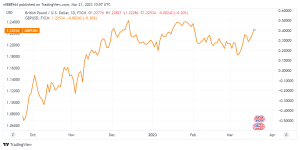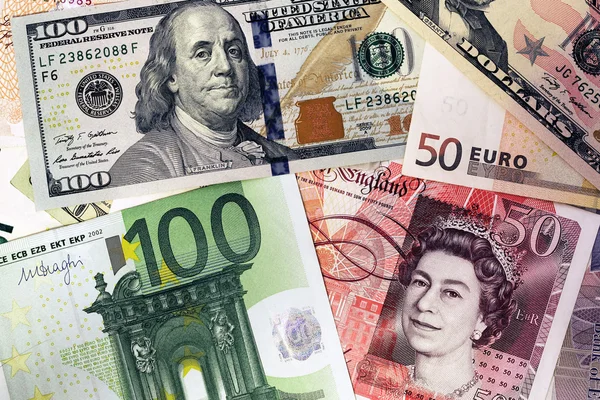The pound-to-dollar exchange rate has fallen below 1.2250.
After advancing near 1.2300 on Monday, the GBPUSD has lost traction and fell below 1.2250 early Tuesday. If markets remain divided over the Bank of England’s (BOE) upcoming policy decision. The Pound Sterling may struggle to capitalize on risk flows. On Monday, the broad-based selling pressure surrounding the US Dollar boosted GBPUSD.
Investors are still undecided about the BOE’s imminent interest rate decision.
On Tuesday morning in Europe, the US Dollar Index remains stable, underpinned by rising US Treasury bond rates. According to the CME Group Fed Watch Tool, markets are pricing in a more than 80% chance that the US Federal Reserve (Fed) will raise its policy rate by 25 basis points (bps).
On the other hand, according to futures market positioning, there is a roughly 50% chance that the BOE will raise interest rates. The Bank of England’s policy rate will remain steady on Thursday.
As a result, the likelihood of policy divergence between the Fed and the BOE may prevent the GBPUSD from capitalizing on the risk-positive market environment.
The US economic calendar will include Existing House Sales for February in the second half of the day. Investors, on the other hand, are prone to disregard this information.
If risk flows continue to dominate markets in the American session, with Wall Street’s key indexes adding on Monday’s gains, the US Dollar may remain on the back foot, limiting the pair’s losses even if it fails to establish bullish momentum.
GBPUSD Technical Analysis
Around 1.2200, the bottom limit of the ascending regression channel from early March creates significant support.
If that level is breached, more losses towards 1.2150 (static level) and 1.2120 (50-period Simple Moving Average (SMA) on the four-hour chart) are possible.

1.2280 (ascending channel midpoint, psychological level) is the first resistance level before 1.2300 (psychological level) and 1.2340. (upper limit of the ascending channel).









